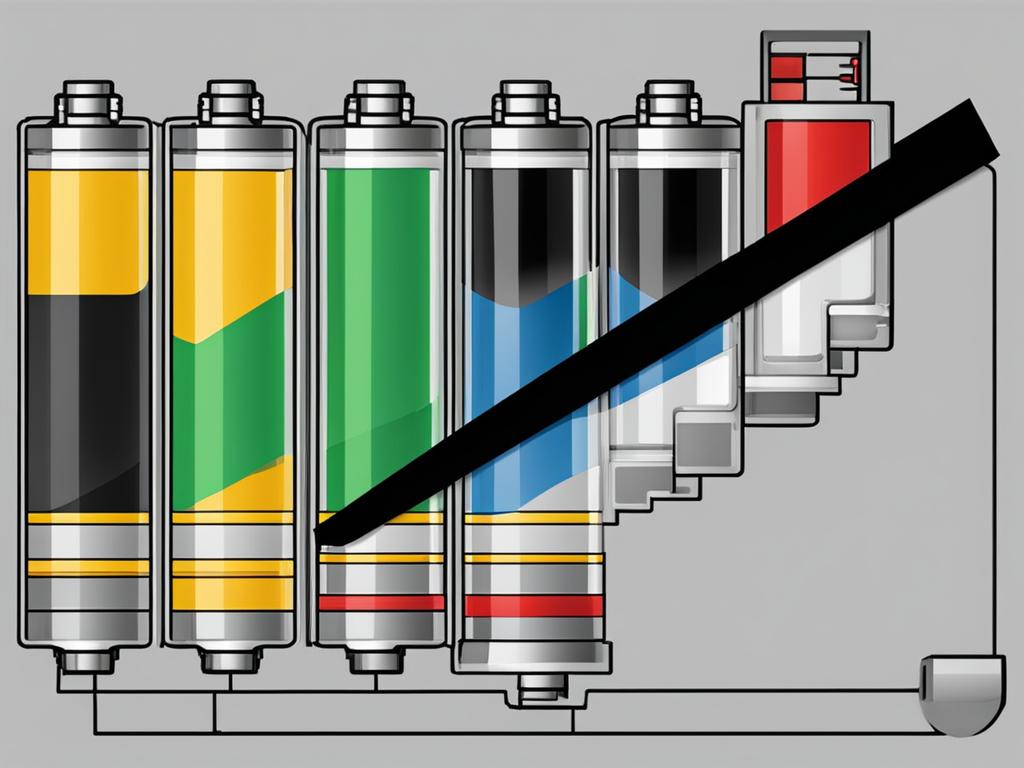When it comes to power tools, the performance and runtime depend on the battery capacity. Knowing the difference between a 2Ah and a 4Ah battery can help you make informed decisions and choose the right battery for your needs.
Ah, or amp hours, refers to the capacity of a battery to deliver power over time. A 2.0Ah battery has a lower capacity compared to a 4.0Ah battery, which means it provides less power and has a shorter runtime. However, it is important to note that the voltage remains the same in both batteries.
The difference between the two lies in the number of cells and energy density, resulting in varying amp hour capacities. Higher amp hours lead to longer runtime and, subsequently, more power. This is especially important when tackling more intensive tasks.
When choosing the right battery capacity, consider the intensity of your task. For lighter-duty tasks, a smaller 2.0Ah battery may be sufficient. Its lighter weight can also be an advantage in certain situations. However, for medium and heavy-duty applications, a higher capacity battery like a 4.0Ah or higher is recommended, as it provides more power and longer runtime.
Key Takeaways:
- 2Ah and 4Ah batteries differ in capacity, affecting the power output of power tools.
- A 2.0Ah battery provides less power and has a shorter runtime compared to a 4.0Ah battery.
- Higher amp hours result in longer runtime and more power.
- Consider the intensity of your task when choosing the right battery capacity.
- A 2.0Ah battery may suffice for lighter-duty tasks, while a 4.0Ah or higher is recommended for medium and heavy-duty applications.
Performance Comparison: 2.0Ah vs 5.0Ah Batteries
In a head-to-head comparison between a 2.0Ah battery and a 5.0Ah battery, the results revealed significant differences in power output and performance. The 5.0Ah battery emerged as the clear winner, delivering superior performance and efficiency.
The test specifically focused on drilling speeds using high-speed auger bits and spade bits. It was observed that the 5.0Ah battery consistently showcased faster drilling speeds compared to its 2.0Ah counterpart. As the size of the self-feed bits increased, the difference in drilling speed grew even more pronounced.
With larger self-feed bits, the 5.0Ah battery exhibited faster drilling times, providing solid evidence that higher battery capacity leads to enhanced performance and productivity. The ability to power through tasks quickly and efficiently is a significant advantage that comes with opting for a higher Ah battery.

| Battery Capacity | Power Output | Drilling Speed |
|---|---|---|
| 2.0Ah | Lower | Slower |
| 5.0Ah | Higher | Faster |
Table: Performance Comparison – 2.0Ah vs 5.0Ah Batteries
Choosing the Right Battery for Your Needs
When it comes to selecting the right battery for your power tool, considering the battery capacity is crucial. The choice between a 2.0Ah and a 4.0Ah battery depends on the specific power needs of your tasks.
For lighter-duty applications, such as simple drilling or light carpentry work, the smaller 2.0Ah battery can be a suitable option. Its compact size and lighter weight make it easier to handle, providing convenience and maneuverability. Additionally, the 2.0Ah battery offers sufficient power output to accomplish these tasks effectively.
On the other hand, for medium and heavy-duty projects that require more power and a longer runtime, a higher capacity battery, like the 4.0Ah or higher, is recommended. The advantages of a 4.0Ah battery become evident when tackling demanding tasks, such as driving large screws, drilling through tough materials, or operating power-hungry tools. Its increased capacity translates into more power, enabling you to complete your tasks efficiently and effectively.
Ultimately, the choice between a 2.0Ah and a 4.0Ah battery boils down to the intensity of the task at hand and your power needs. Assess the requirements of your projects and consider the benefits of each battery capacity before making your decision. By selecting the right battery for your needs, you can ensure optimal performance and productivity from your power tools.
FAQ
What is the difference between a 2.0Ah battery and a 4.0Ah battery?
The main difference is the amp hour capacity, which affects the power output of power tools. A 4.0Ah battery provides more power and longer runtime compared to a 2.0Ah battery.
How does battery capacity affect power output?
Battery capacity, measured in amp hours (Ah), directly impacts power output. Higher amp hours result in more power and longer runtime, while lower amp hours provide less power and shorter runtime.
Which battery provides better performance, a 2.0Ah or a 5.0Ah?
In performance tests, a 5.0Ah battery consistently outperformed a 2.0Ah battery in terms of power output. It demonstrated faster drilling speeds and shorter drilling times, making it the better choice for demanding tasks.
What are the advantages of a 4.0Ah battery?
A 4.0Ah battery offers higher amp hour capacity, resulting in increased power and longer runtime. It is suitable for medium and heavy-duty applications and provides better performance compared to lower capacity batteries.
What are the benefits of a 2.0Ah battery?
A 2.0Ah battery offers a lighter weight and is suitable for lighter-duty tasks. It provides sufficient power for less demanding applications and is more convenient for jobs that require mobility and maneuverability.
How do I choose the right battery for my needs?
The choice of battery depends on the intensity of the task and your specific power needs. For lighter-duty tasks, a smaller capacity battery like a 2.0Ah may be sufficient. For medium and heavy-duty applications, a higher capacity battery like a 4.0Ah or higher is recommended for increased power and longer runtime.
Source Links
- https://www.protoolreviews.com/battery-amp-hours-affect-power/
- https://www.ottawafastenersupply.com/what-does-ah-or-ah-mean-on-a-battery/
- https://www.iceshanty.com/ice_fishing/index.php?topic=387287.0
